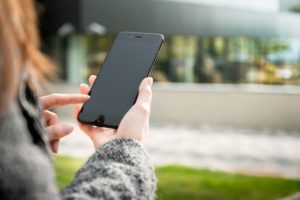Few things are as frustrating as sitting on hold on your phone, listening to the same pre-recorded message on loop while you wait to speak to a live agent or operator. Even great hold music doesn’t really make the process any better. One thing that does make it better is the option to receive a callback instead of waiting. Giving your callers the ability to choose to be called back for their turn rather than to sit on hold with your call center is one of the most effective ways to improve the experience and improve customer satisfaction overall. This is the biggest reason to employ this service, so read on for tips on how best to implement it to improve your customer service.

Every call center should schedule callbacks. Here’s why you should use them, too.
Make It Easy but Not Automated
Let’s be honest, most customers today know how to navigate technology enough that if they could solve their own problem using an automated system or your website, they would have before calling. So hearing the same hold message about those options repeatedly just spoils the customer experience even more. But waiting for the real person also impacts their day. Letting them choose to be called back is a great way to make the experience better.
Decrease Wait Times
In order to limit the wait time as much as possible, very early in the call, your phone system should inform the customer approximately how long their hold time is (always use an estimated range) and offer the callback option. This limits how long the customer actually spends on hold. After that, if they choose not to be called back, the system should offer the option again every few minutes, especially if the call exceeds your service level goal for hold time. Finally, make sure that your system is set up not to offer a callback too close to your closing time. You don’t want to have a customer schedule a callback and then not get it because your call center closed.
Allow Callback Flexibility
The biggest reason customers choose not to receive callbacks is that they are afraid of missing the call. Set up your system to handle this issue by either allowing customers to set their own time for a callback or to receive repeated callbacks if the first one isn’t answered. If you allow scheduling of callbacks, your customer can be sure they know precisely when a callback will happen, and they can be ready. On the other hand, ensuring repeat callbacks means that if something unexpected comes up, the customer won’t be out of luck. Either way, your hold message should clearly communicate that these options are available if the customer chooses a callback.
Contact TeleRep Today!
If you are ready to install a call center service for your business, TeleRep is here to help. If you still have more questions, our trained professionals are ready to answer them. We know how important customer feedback is to you and your business, so let them know that you care with an answering service. To learn how TeleRep can help you today, visit us online or give us a call at 1-800-638-2000. To keep up with our work and to see what we have been up to, be sure to follow us on Facebook, Twitter, LinkedIn, and Pinterest.
